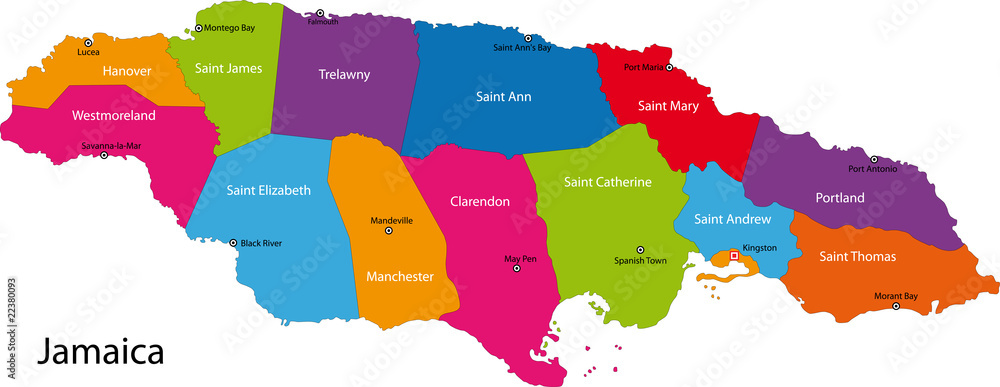Jamaica is comprised of 14 parishes. The upper region is often referred to as the Northern Coast and the lower region the Southern Coast.
Jamaica: Location, Size, and Population
Jamaica, the third-largest island in the Caribbean, is a vibrant and culturally rich nation known for its breathtaking landscapes, reggae music, and warm, welcoming people. Located in the Caribbean Sea, the island is part of the Greater Antilles and lies south of Cuba, west of Haiti and the Dominican Republic, and approximately 90 miles (145 kilometers) south of the U.S. territory of the Cayman Islands. Its strategic location in the heart of the Caribbean has made it a popular tourist destination and a key player in regional trade and commerce.
Where is Jamaica Located?
Jamaica is situated in the Caribbean region of North America. It is an island nation in the Caribbean Sea, positioned at approximately 18 degrees north latitude and 77 degrees west longitude. It shares no land borders with any other country, but its proximity to several other Caribbean nations makes it an important hub for travel and trade.
To the north of Jamaica is Cuba, the largest island in the Caribbean, while to the east lies Hispaniola, which is shared by Haiti and the Dominican Republic. To the west, across the Caribbean Sea, is Central America, with countries like Honduras and Nicaragua relatively close. Jamaica’s location in the tropical belt gives it a warm, sunny climate year-round, making it a favorite destination for travelers seeking beaches, adventure, and cultural experiences.
Jamaica’s Size and Geography
Jamaica covers an area of 4,244 square miles (10,991 square kilometers), making it the third-largest island in the Caribbean, after Cuba and Hispaniola. The island is 146 miles (235 km) long from east to west and varies in width, ranging from 22 to 51 miles (35 to 82 km).
Despite its small size, Jamaica boasts diverse geography. The island is characterized by mountainous terrain, with the Blue Mountains in the east being the highest range. The Blue Mountain Peak, the tallest point in Jamaica, stands at 7,402 feet (2,256 meters) above sea level and offers breathtaking views of both the Caribbean Sea and, on clear days, even the distant island of Cuba.
Jamaica is also home to lush rainforests, beautiful rivers, and stunning beaches that attract millions of visitors each year. The island’s coastline is dotted with natural harbors, bays, and white sandy beaches, making tourism one of the major contributors to its economy.
Jamaica’s Population
As of 2024, Jamaica has an estimated population of approximately 2.8 million people. The majority of Jamaicans reside in urban areas, with the capital city, Kingston, being the most populous, housing over 670,000 residents in its metropolitan area. Other major cities include Montego Bay, a tourism hotspot, Spanish Town, the former capital, and Mandeville, known for its cool climate and British colonial influence.
Jamaica has a rich cultural heritage, with the majority of its population of African descent, alongside smaller communities of Indian, Chinese, European, and Middle Eastern heritage. The country is known for its strong sense of national identity, music (particularly reggae and dancehall), and athletic excellence, particularly in track and field.
Conclusion
Jamaica, though small in size, is a significant player in the Caribbean. Its strategic location, diverse landscapes, and vibrant population make it a unique and fascinating country. Whether for its natural beauty, cultural richness, or economic importance, Jamaica continues to captivate people worldwide.


